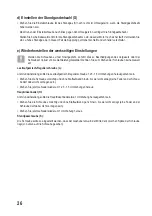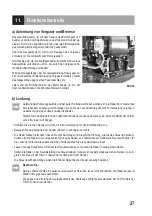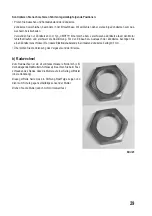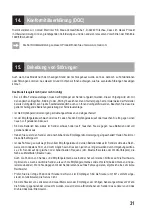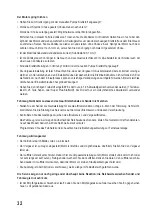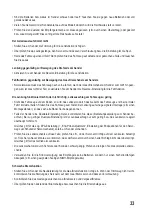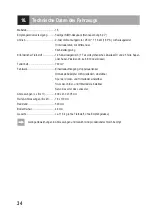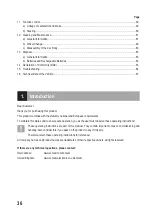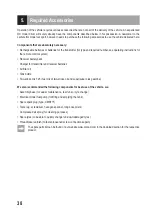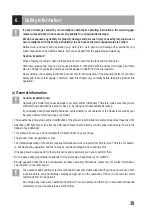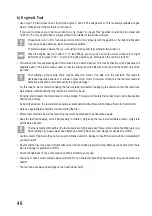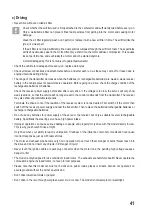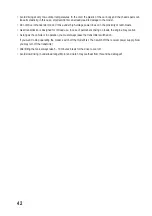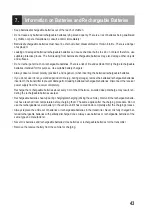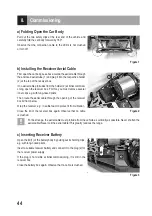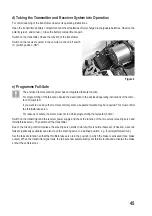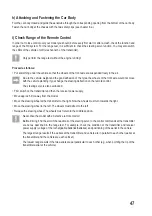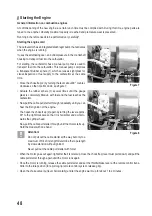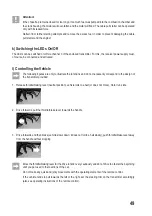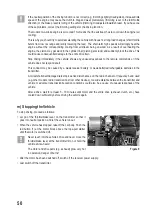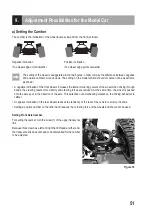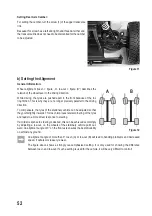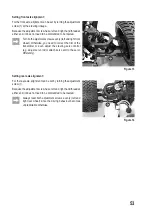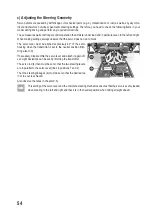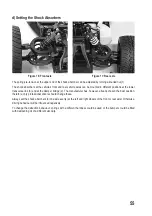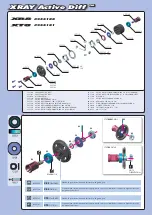
40
b) Engine & Fuel
• Use only a 1:25-two-stroke mix as fuel for the engine (1 part oil, 25 parts gasoline). This is usually available at a gas
station. Observe that fully synthetic oil is mixed in.
If you want to produce your own two-stroke mix, only „Super“ or „Super Plus“ gasoline is permitted (no diesel and
no E10!). The only oil permitted is a fully synthetic oil suitable for two-stroke mixtures.
Cheap motor oil or oil for four-stroke motors will not mix properly with the gasoline. The lack of lubrication
may cause engine damage, loss of warranty/guarantee!
Therefore, always observe that you are using a high.quality fully synthetic two-stroke oil.
When the engine has run in after 10 - 15 tank fillings, you may use a mix with a lower oil share for a slight
performance increase (1:30 = 1 part oil, 30 parts gasoline), as indicated on the vehicle‘s tank lid.
• Two-stroke fuel may separate again if left to stand for an extend period. This means that the oil and gasoline will
separate again in the fuel container used, or that the mixing ration is different in the top and the bottom part of the
fuel tank.
Then fuelling up the vehicle, there may be either too much or too little oil in the fuel tank. This leads to
decreased start-up behaviour or a lower output of the motor. A too-slow oil share in the fuel also leads to
defective lubrication and subsequently to engine damage!
For this reason, we recommend shaking the fuel container well before fuelling up the vehicle, so that the fuel mixes
well. Observe beforehand that the fuel tank is carefully closed.
• If driving is terminated, the model tank must be emptied. For reasons of safety, the model must only be transported
with the tank empty.
As described above, the fuel will also separate at extended standing times which makes the motor hard to start.
• Only use appropriate containers for transporting the fuel.
• Empty fuel containers as well as remaining fuel must be disposed of as hazardous waste.
• Keep the fuel locked away, store it inaccessibly to children. Only keep the fuel in well ventilated rooms. Only store
permissible amounts.
The fuel is highly combustible; the fuel vapours are highly explosive! Never smoke when handling fuels (e.g.
when fuelling up). Keep away naked flame and other ignition sources! Danger of explosion and fire!
• Avoid contact of the fuel with eyes, mucous membranes and skin. Danger to health! Consult a doctor immediately if
you feel unwell!
• Never spill the fuel. Use a special fuel bottle to fuel the car. Spilling fuel will not only damage the environment; there
also is a danger of explosion and fire!
• Check the tightness of hose connections and tank lid before every use.
• Test-runs or drives must only take place outdoors. Do not inhale the fuel and exhaust fumes; they are hazardous to
health!
• The fuel can eat away and damage varnish and rubber parts.
Summary of Contents for 1326247
Page 134: ...134 ...
Page 135: ...135 ...

